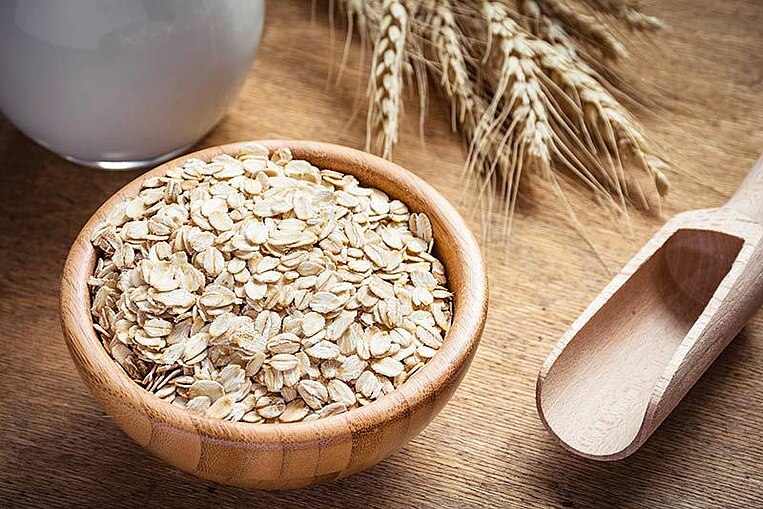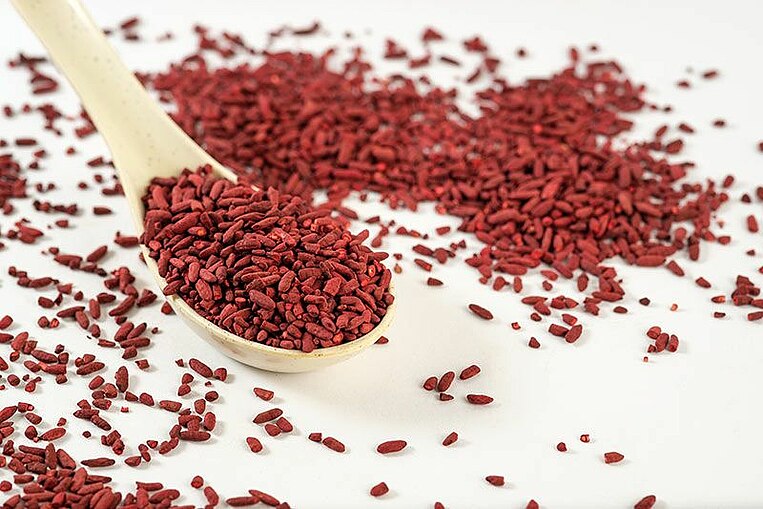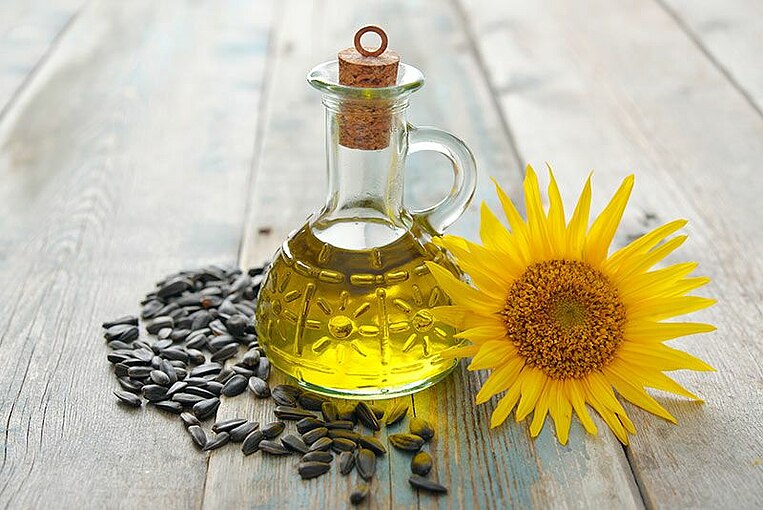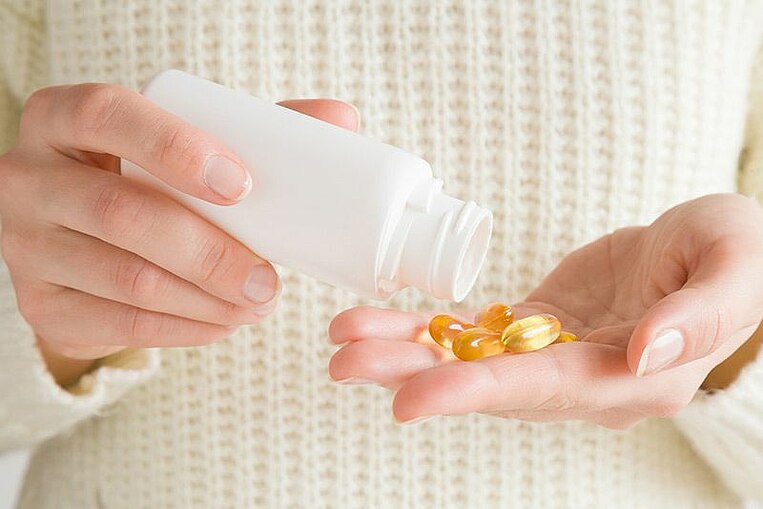Cholesterol-lowering medications are among the most commonly prescribed medications. However, many people are not aware that high cholesterol levels (hypercholesterolemia) can be reduced naturally. Certain types of vitamins and other nutrients increase the amount of cholesterol being removed from the body, reduce the production of cholesterol, and protect the blood vessels from the negative effects of high cholesterol. Read in this article which types of nutrients have a natural cholesterol reducing effect.
Causes and Symptoms
High cholesterol levels (hypercholesterolemia) can have many different causes. The most common reason for high cholesterol is a combination of an unhealthy lifestyle and hereditary factors. The body produces too much cholesterol. If this is combined with a high fat and low wholegrain diet along with a lot of alcohol, smoking, being overweight and a lack of physical activity, the level of cholesterol in the blood will rise. These factors are evident in between 60 and 70 percent of all cases.
Diseases such as diabetes and an underactive thyroid (hypothyroidism) can also cause high cholesterol levels. The causes of high cholesterol can also be hereditary: For example, genetic changes can make the body unable to break down cholesterol. This can have serious consequences at a very early stage in those affected, such as heart attack.
Info
The cholesterol levels of a healthy adult should be approx. 200 milligrams per deciliter and the LDL cholesterol level below 100. When testing for high cholesterol levels, the level of the harmful LDL cholesterol is especially important.
At first glance, high cholesterol levels are not visible. This is because high (LDL) cholesterol levels are usually without symptoms. Only laboratory blood tests can show if the cholesterol levels are high or not. If cholesterol levels are permanently too high, this can have consequences: In particular, the harmful LDL cholesterol can deposit in the blood vessel and damage the vascular walls. If the LDL cholesterol levels remain high for a long period of time, the vessel will become narrower and narrower which eventually leads to calcification of the arteries (arteriosclerosis). This is often compounded by the fact that the blood vessel-protecting HDL cholesterol levels are too low. This can lead to: High blood pressure, heart attacks, and stroke.
Aim of the treatment
What is the standard treatment for high cholesterol levels?
High cholesterol levels are commonly treated using medication. Doctors mainly prescribe statins. These include Atorvastatin, Fluvastatin, Lovastatin, Pravastatin, Rosuvastatin, or Simvastatin.
Fibrates are another type of cholesterol-lowering medication, for example Bezafibrate and Fenofibrate, or the anion-exchange resin Cholestyramine.

Tips
For patients who are overweight, doctors strongly recommend weight loss. Weight loss reduces the production of cholesterol in the liver and in the blood.
The aims of micronutrient medicine.
Diet has a significant effect on cholesterol levels. However, it is not only energy intake that has an effect on cholesterol levels: Taking a micronutrient also significantly helps to manage cholesterol levels. Certain types of micronutrients directly reduce cholesterol levels while at the same time they reduce the risk of secondary diseases - including arteriosclerosis, high blood pressure, or heart attack.
The most important nutrients for low cholesterol levels and healthy blood vessels are: certain types of dietary fibers from oats, plant substances (phytochemicals) from artichoke leaves, vitamin D, L-carnitine, antioxidants, B vitamins, and omega-3 fatty acids.
Treatment using micronutrients
Naturally reducing cholesterol levels with dietary fiber from oats
How beta-glucan works
The dietary fiber beta-glucan binds with bile acids and ensure that these are removed from the body. This helps the cholesterol levels as follows: Bile acids are produced using cholesterol. If, with the help of beta-glucan, the body removes more bile acids, more cholesterol is used to produce new bile acids. For this process, the body will use cholesterol taken from the blood, and in turn, this leads to a natural reduction of the cholesterol levels.
Beta-Glucans are a type of dietary fiber which are found, in particular, in the outer layers of the oat grain. 3 grams of beta-glucan is found in approximately 80 grams of oats. 40 grams of oat bran contains the same amount and helps reduce cholesterol levels.
Dosage and recommended use of Beta Glucan
To effectively reduce cholesterol levels, at least 3 grams of beta-glucan per day are needed. Numerous high-quality studies have shown that adhering to this recommended intake of beta glucan will reduce cholesterol levels by an average of 12 milligrams per deciliter (mg/dl) and the LDL levels by also 10 milligrams per deciliter. When compared to the initial levels, this is a reduction of between 5 and 10 percent.
Tips
If you prefer not to eat a large portion of oatmeal every day (80 gram oatmeal), there are special beta-glucan products available. These products are easily mixed into yogurt, cereal, or drinks.
Beta-Glucan: Instructions if taking medications or if suffering from disease
Soluble fibers, such as beta glucans from oats, can reduce the absorption of medications by forming a gel-like substance in the intestinal tract. This means that less of the active substance enters the bloodstream It is recommended to leave at least two hours between the intake of each substance.
Patients with coeliac disease should be careful with their consumption of oat beta-glucan. Oats contain low-levels of gluten. However, some of those affected are able to tolerate oats without any problems. Others, on the other hand, develop symptoms. If you suffer from coeliac disease but want to receive beta glucan from oats, then consult your doctor beforehand.
Artichoke is suspected of reducing the body's cholesterol production.
How artichoke extract works
Researchers suspect that the substances contained in artichoke leaves reduce the new production of cholesterol in the liver. Several medical studies have shown that artichoke extract has a positive effect on cholesterol levels. It not only reduces the LDL cholesterol levels, but increases the good HDL cholesterol level when compared to the effects of a placebo.
Artichoke leaves also stimulate the drainage of bile. Bile contains bile acids which are produced from cholesterol. This enables artichoke extract to help the cholesterol-lowering effects of other nutrients while also reducing the harmful LDL levels.
Dosage and Recommended Use:
At least 500 milligrams of artichoke extract per day are needed to effectively reduce cholesterol levels. The artichoke extract should ideally be taken before meals. This helps achieve an additional digestion-promoting effect.
Tips
A high-quality extract is better than powdered artichoke leaves. Extract usually contains a more concentrated form of the active substance.
Artichoke extract: Usage instruction when suffering from gallstones, pregnant, breastfeeding, or using blood-thinning medication
It is advisable for those who have been diagnosed with gallstones to avoid taking artichoke extract. Because the active substance promotes the production of bile, this can lead to a blockage of the bile ducts and biliary colic.
Pregnant and breastfeeding women should also avoid using artichoke extract or consult their doctor beforehand. There are currently an insufficient number of studies dealing with the effects of artichoke extract on pregnant and breastfeeding women.
Artichoke extract can reduce the blood-thinning properties of coumarin anticoagulant medications. If you are taking blood-thinning medication, then consult with your doctor before using artichoke extract: Your doctor will use the PT quick test (PT: Prothrombin Time) to determine if the effectiveness of the medication has been affected. These include medications containing the active substance phenprocoumon and Warfarin.
Are high cholesterol levels the result of a vitamin D deficiency?
How vitamin D works
Although it is not clear if the use of Vitamin D has a direct lowering effect on cholesterol levels, the correlation between good vitamin D intake and low cholesterol levels has been shown in several medical studies. The participants with higher vitamins D levels in their blood (above 30 nanograms pro milliliter), were, on average, shown to have lower cholesterol levels that those with vitamin D deficiency.
In addition, vitamin D is also important for the control of blood pressure levels and for the function of the heart muscle. This enables well-filled vitamin D storage to reduce the negative effects of high cholesterol.
Dosage and recommended use of Vitamin D
Ideally, vitamin D intake levels should be based on the vitamin D levels in the blood. This is the only way to ensure that a deficiency is being effectively treated. All relevant information for the correct dosage to treat a vitamin deficiency can be found in the article Vitamin D.
If you don't know what your vitamin D level is, then it advisable to take between 1,000 and 2,000 International Units to boost your cholesterol metabolism.
Vitamin D is best taken at mealtimes. Vitamin D is fat soluble and can only be properly absorbed by the intestinal tract if fat is present. Small amounts of fat in your food are enough.
A blood test to establish your vitamin D level
It is advisable to determine the vitamin D levels in the blood if your cholesterol levels are high or if you are suffering from cardiovascular diseases. This is the only way to effectively treat a possible vitamin D deficiency.
The laboratory tests will determine the presence of a type of vitamin D which circulates through the bloodstream - 25-hydroxy vitamin D. The level is tested in the blood serum, which is blood fluid without blood cells.
The ideal blood serum vitamin D levels are between 40 and 60 nanograms per milliliter or 100 and 150 nanomoles per liter.
Vitamin D: Instructions if taking medication or during illness
Those with kidney disease should avoid taking vitamin D before consulting their doctor first. Kidney patients have problems with the mineral balance in their body. They may have calcium levels that are too high. Because vitamin D promotes the absorption of calcium in the intestinal tract, calcium levels in the blood can increase sharply. Patients with kidney stones (which contain calcium) must also be careful.
Patients with the inflammatory connective tissue disease sarcoidosis (also known as Boeck's disease) should not supplement with vitamin D. Patients with sarcoidosis often have high calcium levels in their blood, which may increase further if using vitamin D supplements.
Thiazide diuretic medications containing the active substances hydrochlorothiazide, xipamide, and indapamide, reduce the levels of calcium removed from the body by the kidneys. This leads to increased levels of calcium in the blood. Because vitamin D also increases the calcium levels in the blood, vitamin D should only be taken in combination with thiazide diuretics if calcium levels are subject to regular monitoring.
Fermented red yeast rice inhibits the production of cholesterol
How fermented red yeast rice works
Red yeast rice, also known as red fermented rice, is effective in reducing high cholesterol levels. The active substance is monacolin K which inhibits the body's production of cholesterol in the same way that a statin does Red yeast rice is therefore a natural way to reduce high cholesterol levels.
Info
Red yeast rice is normal rice which is colored red using a special process. The rice is fermented using a fungus which creates the red color. In Asia, red yeast rice is used as a food coloring and in traditional medicine.
Dosage and Recommended Use:
The optimal dosage of red yeast rice depends on blood cholesterol levels. Between 10 and 20 milligrams per day are advisable to reduce high cholesterol levels. Due to its statin-like effects, consult your doctor before using red yeast rice.
Red yeast rice extract: Instructions when suffering from illnesses, pregnant and taking medication
Red yeast extract should not be used when suffering from liver or kidney diseases, biliary blockage, or when pregnant or breastfeeding. It is also not recommend to use red yeast rice in combination with other types of cholesterol-lowering medications or with coumarin blood thinners and immune suppressant medications (cyclosporin).
Info
There is a possibility of side-effects. Because the active substance monacolin K is chemically identical to the medications Lovastatin or Simvastatin, red yeast rice can also cause side-effects. These include headaches, digestive problems, skin rashes, and muscle pain. However, experts are not certain that the side-effects triggered by red yeast rice are as severe as those of the medication. Some studies found that red yeast rice had less side-effects.
It is likely that phospholipids reduce the amount of cholesterol absorption in the digestive tract
How phospholipids work
It is suspected that certain types of fat-like substances (phospholipids) inhibit the absorption of cholesterol from food in the digestive tract The nutrient choline is involved in transporting fats in the blood. The most significant substance is lecithin (Phosphatidylcholine), which is found in soy and eggs.
Expertenwissen
Together with water and other fats, phospholipids produce micelles (a specific type of fat transport molecule) which encases the cholesterol from food. This leads to cholesterol being absorbed less or not at all.
Initial medical studies have shown that phosphatidylcholine can reduce cholesterol levels. In particular, it was observed that harmful LDL cholesterol levels sank while good HDL levels increased. Phosphatidylcholine can play an important role in naturally reducing cholesterol levels.
Dosage and Recommended Use:
Between 1,000 and 2,000 milligrams of phosphatidylcholine per day are required to reduce high cholesterol levels. Phosphatidylcholine should be taken at mealtimes to immediately reduce cholesterol absorption.
In general, if suffering from cardiovascular diseases it is advisable to consult your doctor before beginning a permanent course of medication with phosphatidylcholine. Some people suffer from abnormalities in the make-up of their intestinal flora. This can theoretically cause the intestinal bacteria to generate the substance TMAO (trimethylamine N-oxide) from phosphatidylcholine. If high levels of TMAO are present in the blood over a long period of time, the risk of developing diabetes or cardiovascular diseases increase. However, a scientific review found no evidence of a direct correlation between phosphatidylcholine and cardiovascular disease. A doctor is able to control the progression of the disease and ensure that it does not become worse.
Tips
Phosphatidylcholine is often extracted from soy. This makes it unsuitable for those with a soy allergy. However, there are other sources: If you suffer from a soy allergy, look for phosphatidylcholine extracted from sunflower or rapeseed oil.
Phosphatidylcholine: What to watch out for while pregnant, breastfeeding, taking medications, and during illness
As there is no adequate research on the use of phosphatidylcholine (lecithin) during pregnancy or when breastfeeding, it should not be used by these groups unless after consultation with a doctor.
Possible interactions with blood-thinning medications containing coumarin and phosphatidylcholine cannot be ruled out. For example, these include the active substance phenprocoumon and Warfarin. Therefore, consult a doctor before taking these supplements. The doctor can test your blood coagulation.
Those with kidney diseases should not use phosphatidylcholine. When the body breaks down choline substances, substances are produced that can cause damage if not removed from the body.
For safety reasons, cancer patients should also avoid taking high doses of phosphatidylcholine. Cancer cells can change the way the body metabolizes phosphatidylcholine. The effects of phosphatidylcholine beyond normal dietary intake levels have not been studied.
L-carnitine reduces LDL and increases HDL cholesterol levels
How L-carnitine works
Medical studies have confirmed the cholesterol-regulating effects of L-carnitine: L-carnitine caused not only the LDL levels to fall but also the blood-vessels protecting HDL cholesterol levels to increase. In the body, L-carnitine is responsible for transporting long-chain fatty acids to the power plants of the cells where they are converted into energy.
The antioxidant properties of L-carnitine also protect the blood vessels and reduce oxidized LDL cholesterol levels. Oxidized LDL cholesterol is responsible for creating deposits in the blood vessels, for example in the coronary arteries, which can cause a heart attack.
Dosage and Recommended Use:
While large amounts of L-carnitine are also present in meat, a diet with a lot of meat, especially fatty meats and offal, is not recommended for those with high cholesterol levels. A plant-based diet is low in L-carnitine levels, which is why supplementing can be advantageous. Between 1,000 and 2,000 milligrams per day of L-carnitine is advisable to reduce high cholesterol levels.
L-carnitine can be taken before or with meals. However, it is best to spread the dosage out throughout the day. For example, 500 milligrams in the morning, afternoon, and evening. This ensures that the L-carnitine is well absorbed into the bloodstream. L-carnitine L-tartrate is the most easily digestible and causes no stomach or intestinal problems.
If suffering from cardiovascular disease, the use of L-carnitine should be discussed with a doctor beforehand. If also suffering from an unbalanced intestinal flora, taking L-carnitine could lead to the production of harmful metabolic byproducts (TMAO). It is not yet clear if they worsen cardiovascular conditions or have a negative effect on diabetes and prediabetic conditions (metabolic syndrome).
L-carnitine: Instructions if taking medication or during illness
If suffering from cancer, discuss the use of L-carnitine with a doctor. For certain types of cancers with increased fat metabolism rates, L-carnitine could promote cancer growth.
If suffering from liver diseases, there is a risk that L-carnitine may additionally burden the liver due to the production of harmful metabolic byproducts (TMAO). If considering the use of L-carnitine when suffering from liver disease, then regular consultation with a doctor is recommended.
L-carnitine can improve blood sugar levels in patients with diabetes. If L-carnitine is taken in conjunction with blood sugar-lowering medications, there is a risk of hypoglycemia (low blood sugar levels). These include Metformin and sulfonylureas. Regular monitoring of blood sugar levels and consultation with a doctor are recommended.
L-carnitine may increase the effects of the Coumarin group of anticoagulants (vitamin K antagonists). These medications include ethyl biscoum acetate, Phenprocoumon and Warfarin. Therefore, consult a doctor before taking these supplements The doctor can determine your coagulation status (INR).
Antioxidants protect the blood vessels from the effects of high cholesterol levels.
How antioxidants work
Antioxidants protect the blood vessels from the effects of high cholesterol levels. LDL cholesterol, in particular, can oxidize in the blood. This means that it is damaged by free radicals and deposits begin to develop on the walls of the blood vessels. This process is the main cause of arteriosclerosis (arterial calcification).
Blood vessel-protecting antioxidants include vitamin C and vitamin E, along with the minerals zinc and selenium and coenzyme Q10. Further medical study is required to determine if these nutrients are able to reduce high cholesterol levels.
Info
Vitamin E plays an important role here: A special vitamin E subtype - the tocotrienols - is suspected of reducing high cholesterol levels.
Dosage and Recommended Use:
Antioxidants are best taken in combination with one another: This provides the most effective vascular protection. They also mutually support each other: For example, vitamin C is necessary to allow vitamin E to regenerate itself after it has finished neutralizing free radicals.
It is advisable to have at least 100 milligrams of vitamin C, 20 milligrams of vitamin E, 10 milligrams zinc, 50 milligrams of selenium, and up to 100 milligrams of coenzyme Q10 per day.
Info
The cholesterol-lowering effects of tocotrienols were observed at dosages of between 50 and 200 milligrams per day.
Especially fat-soluble antioxidants, for example vitamin E, must be taken with food as they can only enter the bloodstream with fat contained in food.
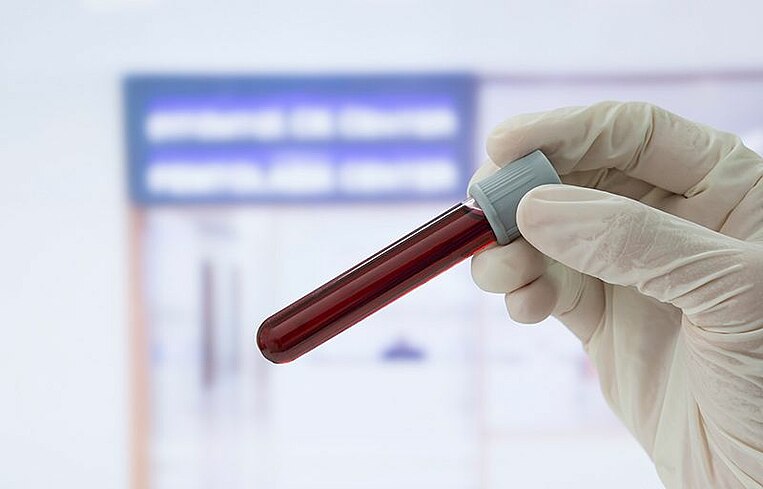
Determining the oxidized LDL and antioxidative status
A test can determine the status of harmful oxidized LDL cholesterol levels in the blood of patients with high cholesterol levels Micronutrient medical specialists recommend this blood test to determine if there is already damage caused by deposits in the blood vessels (arterial calcification).
Testing also determines the antioxidative status. This allows the balance between free radical and antioxidants in the body to be assessed. A blood test is used.
Info
Depending on the laboratory and testing method used, different reference ranges for the antioxidative status may be applied. The correct reference range is the one used by the individual laboratory. The oxidized LDL cholesterol levels should ideally be as low as possible.
Antioxidants: Instructions if taking medications or if suffering from disease
Vitamin C was shown in animal testing to reduce the effectiveness of the blood cancer (leukemia) medication Bortezomib. Therefore, if taking these types of medications, supplements should only be used after consulting your doctor.
Because vitamin C improves the body's iron absorption, those suffering from hemochromatosis (pathological iron overload) should only use vitamin C supplements with regular monitoring by their doctor.
Discuss the use of anticoagulant medication in conjunction with coenzyme Q10 with your doctor. Coenzyme Q10 can reduce the effectiveness of certain types of medications. These include coumarin medications containing the active substances phenprocoumon and Warfarin.
Zinc can bind with osteoporosis (bisphosphonate) medication and make it ineffective. Because of this, it is recommended to leave at least two hours between taking each substance. For example, these include the antobiotics ciprofloxacin, Enoxacin, and tetracycline as well as the bisphosphonate Alendronate, and Clodronate.
In the event of chronic kidney insufficiency or other kidney conditions, no additional zinc and selenium mineral supplements should be used. Weakened kidneys are unable to remove zinc and selenium normally and this increases the level of both in the blood.
B vitamins promote vascular health and reduce cholesterol levels
How B vitamins work
B vitamins are necessary to enable the body to break down homocysteine which would build up in the blood of those with a vitamin deficiency. Homocysteine is a cytotoxin (cell poison) which damages the blood vessels and is suspected of being involved in a number of diseases, including cardiovascular diseases. High homocysteine levels increase the risk of high blood fat levels (lipids) and increase cholesterol levels, high blood pressure and ultimately can lead to arteriosclerosis.
To reduce additional strain on the blood vessels, patients with high cholesterol levels should increase their intake of homocysteine-lowering B vitamins to avoid a vitamin deficiency.
Expert Knowledge
B vitamins are suspected of being directly involved in the cholesterol metabolism process. Several studies have shown that low vitamin B12 levels are related to higher cholesterol levels. In human fat cells, a vitamin B12 deficiency causes increased activity of certain genes which in turn causes increased production of cholesterol.
Dosage and Recommended Use:
The following dosages are effective in reducing elevated levels of homocysteine: 5 to 15 milligrams of vitamin B6, 400 to 600 micrograms of folic acid, and 250 to 500 micrograms of vitamin B12 (as methylcobalamin).
Ideally, an active folic acid supplement should be used. Due to a genetic modification, approximately half of all people are unable or only partially able to convert folic acid into the active form required by the body. This genetic defect can be circumvented by taking an active folic acid supplement, known as 5-methyltetrahydrofolate (5-MTHF).
Homocysteine level testing
Especially in cases of high cholesterol levels, homocysteine blood testing is recommended to ensure that the blood vessels are not subjected to additional damage by elevated homocysteine levels.
Homocysteine is usually tested using blood plasma which is the blood fluid without the blood cells. Normal levels are usually below 10 micromoles per liter.
B-vitamins: Instruction for use during pregnancy, when breastfeeding, if suffering from illness, or taking medication
High dosage vitamin B6 and B12 supplements should only be taken during pregnancy or breastfeeding if a deficiency has been identified. Consult your doctor about this.
The effects of taking B vitamin supplements after the placement of a stent and following a heart attack have not been subject to a sufficient amount of study. B vitamins have a possible negative effect in these cases. High doses of Vitamin B6 (40 to 50 milligrams per day), Vitamin B12 (60 to 400 micrograms per day) and folic acid (800 to 1,200 micrograms per day) should be avoided.
At higher dosages (above 5 milligrams per day), vitamin B6 can reduce the effect of antiepileptic medications and Phenytoin and medication for the treatment of Parkinson's (such as Levodopa (L-Dopa)). These active substances should not be taken in combination with high dosage vitamin B6.
Medications with the following active substances are used for the treatment of infectious diseases: Trimethoprim, Proguanil, and Pyrimethamine. Folic acid reduces the effectiveness of these medications.
Omega-3 fatty acids reduce the risk of secondary disease related to high cholesterol levels
How omega-3 fatty acids work
If diagnosed with high cholesterol levels, it is recommended to reduce the intake of saturated fats such as those in meat, processed meats, and cheese and replace these with polyunsaturated fats – for example linseed oil and fish oil.
Omega fatty acids from fish and linseed oil promote the dilation of the blood vessel and prevent the buildup of deposits in the blood vessels. Overall, they make the blood more fluid and so they can reduce the risk of secondary disease related to high cholesterol levels. They also reduce elevated inflammation levels in the blood which can also be a risk factor for further secondary diseases – these include C-reactive protein (CRP) and lipoprotein-associated phospholipase A2 (Lp-PLA2).
Expert Knowledge
Lp-PLA2 is a marker for cardiovascular diseases. It is present in the inflammation cells in the vascular walls, especially in the core of atherosclerotic plaques and has inflammation-promoting properties. Lp-PLA2 testing is recommended because it provides an accurate risk marker for vascular inflammatory processes and the associated unstable plaques.
If high cholesterol levels are coupled with high triglyceride levels, fish oil capsules are particularly effective. Triglycerides are another type of fat (lipid) found in the blood). Find out more about reducing triglyceride levels using micronutrients here:
Omega-3 Fatty Acids: Dosage and Recommended Use:
Between 1,500 and 2,000 milligrams of omega-3 per day are recommended to help treat high cholesterol levels. Ideally, products with high levels of the omega-3 fatty acid EPA (eicosapentaenoic acid) should be used, with a minimum content of 800 milligrams. EPA has effective anti-inflammatory properties.
Omega-3 fatty acids should be taken with food to ensure maximum absorption into the bloodstream.
Tips
Ensure that the fish oil products are high quality. High quality products undergo certain cleansing processes to remove pollutants and other undesirable residues which can destroy the omega-3 fatty acids and cause cell damage.
The omega-3 index is the ideal way to determine omega-3 blood levels.
The omega-3 index confirms how good the intake of omega-3 fatty acid is. This blood test is advisable if high cholesterol levels and other risk factors have been identified, for example, obesity, high blood pressure, or heart problems.
The omega-3 index is determined using a blood test. The test identifies the amount of omega-3 fatty acids contained in the red blood cells and calculates the findings as a percentage. If the result is above 8 percent, the level of omega-3 is very good. In contrast, below 4 percent shows insufficient omega-3 intake and an increased risk of cardiovascular disease.
Omega-3 Fatty Acids: Instructions when using blood-thinning medication, during illness, and before surgery.
Omega-3 fatty acids improve the flow characteristics of the blood and also have blood-thinning effects. Consultation with a doctor is recommended before using blood-thinning medication. It may be necessary to adjust the dosage of the medication to avoid any undesirable interactions.
Blood thinners include coumarin derivatives and Warfarin, but also acetylsalicylic acid (ASA), heparin and what are known as new oral anticoagulants: Apixaban, Dabigatran, Edoxaban and Rivaroxaban.
In the event that liver disease, acute pancreatic or gallbladder inflammation suddenly develop, stop taking omega-3 supplements. If you have a blood coagulation disorder, please discuss the use of omega-3 supplements with your doctor beforehand.
If surgery is planned, doctors recommend stopping omega-3 supplements one to two weeks before the planned operation to avoid severe bleeding during the procedure. Omega-3 supplementation can resume without problems after the operation.
Dosage overview
Micronutrient recommendations for high cholesterol levels
| Vitamins | |
|---|---|
Vitamin D | 1,000 to 2,000 International Units (IE) also depending on vitamin D levels |
| Vitamin E | at least 20 milligrams (mg) |
| Vitamin C | at least 100 milligrams |
| Vitamin B6 | 5 to 15 milligrams |
| Vitamin B12 (ideally as active methylcobalamin) | 250 to 500 micrograms |
| Folic acid (in the directly available form) | 400 to 600 micrograms |
| Minerals | |
|---|---|
| Zinc | at least 10 milligrams |
| Selenium | at least 50 micrograms |
| Plant substances | |
|---|---|
| Beta-Glucan | at least 3 grams (g) |
| Artichoke extract | at least 500 milligrams |
| Monacolin K from fermented red yeast rice | depending on the cholesterol levels, at least 10 milligrams (Please note: Use only after consulting your doctor) |
| Other Nutrients | |
|---|---|
| Phosphatidylcholine | 1,000 to 2,000 milligrams |
| L-Carnitin | 1,000 to 2,000 milligrams |
| Coenzyme Q10 | 100 milligrams |
| Omega-3 fatty acids | 1,500 to 2,000 milligrams with an especially high EPA level (at least 800 milligrams) |
Overview of recommended laboratory tests
Recommended blood tests for high cholesterol levels
| Normal Values | |
|---|---|
| Vitamin D | 40 to 60 nanograms per milliliter (ng/ml) or 100 to 150 Nanomoles per Liter (nmol/l) |
| Total Antioxidant Status (Serum) | 1.13 to 1.57 Millimoles per liter (mmol/l) |
| Homocysteine (Plasma) | below 10 Micromoles per liter (µmol/l) |
| Omega-3 Index | 5 to 8 Percent (ideally below 8 Percent) |
Supporting the effects of medication with micronutrients
Statins: Coenzyme Q10 and vitamin D reduce muscle pain
One of the most common side-effects of statins is muscle pain. This is also one of the main reasons why people stop taking statins. These side-effects can be effectively reduced using coenzyme Q10 and vitamin D supplements. Between 100 and 300 milligrams of Q10 and 1,000 and 2,000 international units of vitamins D per day are recommended.
Info
Sufficient storage of vitamin D in the body is the foundation for the effectiveness of statin medications. Together with vitamin D, statins are able to reduce cholesterol levels by up to 22 milligrams per deciliter more that they could on their own.
Commonly prescribed statins: These include Atorvastatin, Fluvastatin, Lovastatin, Pravastatin, Rosuvastatin or Simvastatin.
Fibrates increase homocysteine levels
Fibrate cholesterol-lowering medications, for example Bezafibrate and Fenofibrate, increase the level of homocysteine in the blood. However, homocysteine can damage the body's cells so the level should be kept low. B vitamins are necessary to enable the body to break down homocysteine: An effective dosage is between 5 and 15 micrograms of vitamin B6, 400 to 600 micrograms of folic acid (active folic acid: 5-methyltetrahydrofolate) and between 250 and 500 micrograms of vitamins B12.
Studies have also shown that fibrates reduce the levels of coenzyme Q10 and vitamin E in the blood. Between 100 and 200 milligrams of coenzyme Q10 and up to 150 milligrams of vitamins should be used to counterbalance this.
Anion-exchange resins cause deficiencies of fat-soluble nutrients
Anion-exchange resins, such as Colestyramine reduce cholesterol levels by disrupting the digestion of fats. In particular, long-term therapy with this type of cholesterol-reducing medication can lead to a deficiency of fat-soluble vitamins and other nutrients. These include vitamins A, D, E, and K, as well as carotenoids. The absorption of folic acid, vitamin B12, vitamins C, magnesium, and zinc are also reduced.
To avoid deficiency, a vitamin rich diet is advisable. Good food sources of vitamins can be found in the articles for each individual or fat-soluble vitamins using a multinutrient supplement. Ensure that the supplement you are using contains enough to cover the recommended daily intake requirements: 400 micrograms of vitamin A, 1,000 international units of vitamin D, 13 milligrams of vitamin E and 75 micrograms of vitamin K, ideally from K1 and K2.
Info
The micronutrient supplement should be taken either one hour or four hours before or after medication to ensure that micronutrients are correctly absorbed.
Dosage overview
Daily micronutrient recommendation for cholesterol-lowering medications
| Statins | |
|---|---|
| Coenzyme Q10 | 100 to 300 milligrams (mg) |
| Vitamin D | 1,000 to 2,000 International Units (IU) or depending on the Vitamin-D levels |
| Fibrates | |
|---|---|
| Vitamin B6 | 5 to 15 milligrams |
| Vitamin B12 (ideally active methylcobalamine) | 250 to 500 Micrograms (µg) |
| Folic acid (5-Methyltetrahydrofolate) | 400 to 600 micrograms |
| Coenzyme Q10 | 100 to 200 milligrams |
| Vitamin E | up to 150 milligrams |
| Anion-exchange resins | |
|---|---|
| Vitamin A | 400 micrograms |
| Vitamin D | 1,000 International Units |
| Vitamin E | 13 milligrams |
| Vitamin K | 75 micrograms (ideally from K1 and K2) |
Summary
Possible causes of high cholesterol levels include having a very high-fat diet and a lack of physical activity. When cholesterol levels increase there are no symptoms initially. However, if the levels remain high for a longer period of time, then it can be dangerous. The risk of cardiovascular disease increases. It is especially important to reduce high LDL levels.
High cholesterol levels can be effectively reduced with the help of micronutrient medicine. Especially dietary fiber from oats (beta-glucan) and plant substances (phytochemicals) derived from artichoke leaves have a positive blood cholesterol-lowering effect. Vitamins D, certain types of fat-like substances (phospholipids), and L-carnitine also promote the reduction of cholesterol levels. In some cases, the use of red yeast rice is advisable. If you plan on taking red yeast rice then consult your doctor beforehand
Antioxidants, B vitamins, and omega-3 fatty acids help protect blood vessels against the damage caused by high cholesterol levels and should be included in any micronutrient-based treatment course. Whether these substances are also able to reduce high cholesterol levels will require further study.
It is not always possible to reduce high cholesterol levels without the use of statins. However, statins do have side-effects: For example, a common side-effect is muscle pain which can be effectively treated using coenzyme Q10 and vitamin D. Fibrates, on the other hand, increase homocysteine levels which means care should be taken to ensure the consumption of sufficient amounts of B vitamins while anion-exchange resins can cause a deficiency in fat-soluble vitamins.
Study and Source Index
Adaikalakoteswari, A. et al. (2015): Vitamin B12 insufficiency induces cholesterol biosynthesis by limiting s-adenosylmethionine and modulating the methylation of SREBF1 and LDLR genes. Clin Epigenetics. 2015; 7(1): 14. https://www.ncbi.nlm.nih.gov/pmc/articles/PMC4356060, retrieved on: 2017-08-30.
Ahsan, H. et al (2014): Pharmacological potential of tocotrienols: a review. Nutr Metab (Lond). 2014; 11: 52. https://www.ncbi.nlm.nih.gov/pmc/articles/PMC4247006, retrieved on: 2017-08-30.
Baliarsingh, S. et al. (2005): The therapeutic impacts of tocotrienols in type 2 diabetic patients with hyperlipidemia. Atherosclerosis. 2005 Oct;182(2):367-74. https://www.ncbi.nlm.nih.gov/pubmed/16159610, retrieved on: 2017-08-30.
Biesalski, H.-K. (2016): Vitamine und Minerale. Indikation, Diagnostik, Therapie. Georg Thieme Verlag Stuttgart New York.
Biesalski, H.-K. et al. (2010): Ernährungsmedizin. 4. Aufl. Georg Thieme Verlag Stuttgart.
Bundy, R. et al. (2008): Artichoke leaf extract (Cynara scolymus) reduces plasma cholesterol in otherwise healthy hypercholesterolemic adults: a randomized, double blind placebo controlled trial. Phytomedicine. 2008 Sep;15(9):668-75. https://www.ncbi.nlm.nih.gov/pubmed/18424099, retrieved on: 2017-08-30.
Cicero, A.F. et al. (2016): Middle-Term Dietary Supplementation with Red Yeast Rice Plus Coenzyme Q10 Improves Lipid Pattern, Endothelial Reactivity and Arterial Stiffness in Moderately Hypercholesterolemic Subjects. Ann Nutr Metab. 2016;68(3):213-9. https://www.ncbi.nlm.nih.gov/pubmed/27055107, retrieved on: 2017-08-30.
Cohn, J. S. et al. (2010): Dietary Phospholipids and Intestinal Cholesterol Absorption. Nutrients. 2010 Feb; 2(2): 116–127. https://www.ncbi.nlm.nih.gov/pmc/articles/PMC3257636, retrieved on: 2017-08-30.
Daly, C. et al. (2009): Homocysteine increases the risk associated with hyperlipidaemia. Eur J Cardiovasc Prev Rehabil. 2009 Apr;16(2):150-5. https://www.ncbi.nlm.nih.gov/pubmed/19276985, retrieved on: 2018-07-19.
Deutsches Ärzteblatt (2010): Atherosklerose: Lp-PLA2 als Marker und Therapieansatz. Deutscher Ärzteverlag GmbH. 3. Mai 2010. https://www.aerzteblatt.de/nachrichten/41067/Atherosklerose-Lp-PLA2-als-Marker-und-Therapieansatz, retrieved on: 2018-07-25.
Edwards, S. E. et al. (2015): Phytopharmacy: An Evidence-Based Guide to Herbal Medical Products. John Wiley & Sons, Ltd.
Faridi, K. F. et al. (2017): Serum vitamin D and change in lipid levels over 5 y: The Atherosclerosis Risk in Communities study. Nutrition. 2017 Jun;38:85-93. https://www.ncbi.nlm.nih.gov/pubmed/28526388, retrieved on: 2017-08-30.
Gajos, G. et al. (2014): Polyunsaturated omega-3 fatty acids reduce lipoprotein-associated phospholipase A(2) in patients with stable angina. Nutr Metab Cardiovasc Dis. 2014 Apr;24(4):434-9. https://www.ncbi.nlm.nih.gov/pubmed/24555913, retrieved on: 2018-07-25.
Gariballa, S.E. et al. (2012): Effects of mixed dietary supplements on total plasma homocysteine concentrations (tHcy): a randomized, double-blind, placebo-controlled trial. Int J Vitam Nutr Res. 82(4):260-6. https://www.ncbi.nlm.nih.gov/pubmed/23591663, retrieved on: 2017-08-30.
Giovinazzo, S. et al. (2017): Correlation of cardio-metabolic parameters with vitamin D status in healthy premenopausal women. J Endocrinol Invest. 2017 Jun 14. https://www.ncbi.nlm.nih.gov/pubmed/28616825, retrieved on: 2017-08-30.
Gröber, U. (2011): Mikronährstoffe. Metabolic Tuning – Prävention – Therapie. 3. Aufl. Wissenschaftliche Verlagsgesellschaft mbH Stuttgart.
Gröber, U. (2014): Arzneimittel und Mikronährstoffe – Medikationsorientierte Supplementierung. 3. Aufl. Wissenschaftliche Verlagsgesellschaft Stuttgart.
Harris, W.S. et al. (2017): The Omega-3 Index and relative risk for coronary heart disease mortality: Estimation from 10 cohort studies. Atherosclerosis. 262:51-54. https://www.ncbi.nlm.nih.gov/pubmed/28511049, retrieved on: 2017-08-30.
Ho, H.V. et al. (2016): The effect of oat β-glucan on LDL-cholesterol, non-HDL-cholesterol and apoB for CVD risk reduction: a systematic review and meta-analysis of randomised-controlled trials. Br J Nutr. 2016 Oct;116(8):1369-1382. https://www.ncbi.nlm.nih.gov/pubmed/27724985, retrieved on: 2017-08-30.
Kasliwal, R.R. et al. (2016): ESSENS dyslipidemia: A placebo-controlled, randomized study of a nutritional supplement containing red yeast rice in subjects with newly diagnosed dyslipidemia. Nutrition. 2016 Jul-Aug;32(7-8):767-76. https://www.ncbi.nlm.nih.gov/pubmed/27143594, retrieved on: 2017-08-30.
Küllenberg, D. et al. (2012): Health effects of dietary phospholipids. Lipids Health Dis. 2012; 11: 3. https://www.ncbi.nlm.nih.gov/pmc/articles/PMC3316137, retrieved on: 2017-08-30.
Lee, B. J. et al. (2016): Effects of L-carnitine supplementation on lipid profiles in patients with coronary artery disease. Lipids Health Dis. 2016 Jun 17;15:107. https://www.ncbi.nlm.nih.gov/pubmed/27317162, retrieved on: 2017-08-30.
Malaguarnera, M. et al. (2009): L-Carnitine supplementation reduces oxidized LDL cholesterol in patients with diabetes. Am J Clin Nutr. 2009 Jan;89(1):71-6. https://www.ncbi.nlm.nih.gov/pubmed/19056606, retrieved on: 2017-08-30.
Momin, M. et al. (2017): Relationship between plasma homocysteine level and lipid profiles in a community-based Chinese population. Lipids Health Dis. 2017 Mar 14;16(1):54. https://www.ncbi.nlm.nih.gov/pubmed/28288621, retrieved on: 2018-07-19.
Ong, Y. C. & Aziz, Z. (2016): Systematic review of red yeast rice compared with simvastatin in dyslipidaemia. J Clin Pharm Ther. 2016 Apr;41(2):170-9. https://www.ncbi.nlm.nih.gov/pubmed/26956355, retrieved on: 2017-08-30.
Parthasarathy, S.et al. (2010): Oxidized Low-Density Lipoprotein. Methods Mol Biol. 2010;610:403-17. https://www.ncbi.nlm.nih.gov/pmc/articles/PMC3315351, retrieved on: 2018-07-13.
Pérez-Castrillón JL et al. (2010): Vitamin d levels and lipid response to atorvastatin. Int J Endocrinol 320721. https://www.ncbi.nlm.nih.gov/pubmed/20016682, retrieved on: 2017-08-30.
Perk, J. et al. (2012): European Guidelines on cardiovascular disease prevention in clinical practice (version 2012). The Fifth Joint Task Force of the European Society of Cardiology and Other Societies on Cardiovascular Disease Prevention in Clinical Practice (constituted by representatives of nine societies and by invited experts). Eur Heart J. 2012 Jul;33(13):1635-701. https://www.ncbi.nlm.nih.gov/pubmed/22555213, retrieved on: 2018-07-25.
Rondanelli, M. et al. (2013): Beneficial effects of artichoke leaf extract supplementation on increasing HDL-cholesterol in subjects with primary mild hypercholesterolaemia: a double-blind, randomized, placebo-controlled trial. Int J Food Sci Nutr. 2013 Feb;64(1):7-15. https://www.ncbi.nlm.nih.gov/pubmed/22746542, retrieved on: 2017-08-30.
Trebatická, J. et al. (2017): Cardiovascular diseases, depression disorders and potential effects of omega-3 fatty acids. Physiol Res. 2017 Jul 18;66(3):363-382. https://www.ncbi.nlm.nih.gov/pubmed/28248536, retrieved on: 2017-08-30.
Shidfar, F. et al. (2009): Effect of folate supplementation on serum homocysteine and plasma total antioxidant capacity in hypercholesterolemic adults under lovastatin treatment: a double-blind randomized controlled clinical trial. Arch Med Res. 2009 Jul;40(5):380-6. https://www.ncbi.nlm.nih.gov/pubmed/19766902, retrieved on: 2017-08-30.
Skórkowska-Telichowska, K. et al. (2016): Positive effects of egg-derived phospholipids in patients with metabolic syndrome. Adv Med Sci. 2016 Mar;61(1):169-74. https://www.ncbi.nlm.nih.gov/pubmed/26829066, retrieved on: 2017-08-30.
Skulas-Ray, A.C. et al. (2015): Dose Response Effects of Marine Omega-3 Fatty Acids on Apolipoproteins, Apolipoprotein-Defined Lipoprotein Subclasses, and Lp-PLA2 in Individuals with Moderate Hypertriglyceridemia. J Clin Lipidol. 2015 May-Jun; 9(3): 360–367. https://www.ncbi.nlm.nih.gov/pmc/articles/PMC4677829, retrieved on: 2018-07-25.
Valenzuela, A. et al. (2003): Cholesterol oxidation: health hazard and the role of antioxidants in prevention. Biol Res. 2003;36(3-4):291-302. https://www.ncbi.nlm.nih.gov/pubmed/14631863, retrieved on: 2017-08-30.
Wang, H. et al. (2012): Influence of vitamin D supplementation on plasma lipid profiles: A meta-analysis of randomized controlled trials. Lipids Health Dis. 2012; 11: 42. https://www.ncbi.nlm.nih.gov/pmc/articles/PMC3325888, retrieved on: 2017-08-30.
Watanabe, Y. & Tatsuno, I. (2017): Omega-3 polyunsaturated fatty acids for cardiovascular diseases: present, past and future. Expert Rev Clin Pharmacol. 2017 Aug;10(8):865-873. https://www.ncbi.nlm.nih.gov/pubmed/28531360, retrieved on: 2017-08-30.
Whitehead, A. et al. (2014): Cholesterol-lowering effects of oat β-glucan: a meta-analysis of randomized controlled trials. Am J Clin Nutr. 2014 Dec;100(6):1413-21. https://www.ncbi.nlm.nih.gov/pubmed/25411276, retrieved on: 2017-08-30.
Zhu, X. et al. (2015): Quantitative assessment of the effects of beta-glucan consumption on serum lipid profile and glucose level in hypercholesterolemic subjects. Nutr Metab Cardiovasc Dis. 2015 Aug;25(8):714-23. https://www.ncbi.nlm.nih.gov/pubmed/26026211, retrieved on: 2017-08-30.

